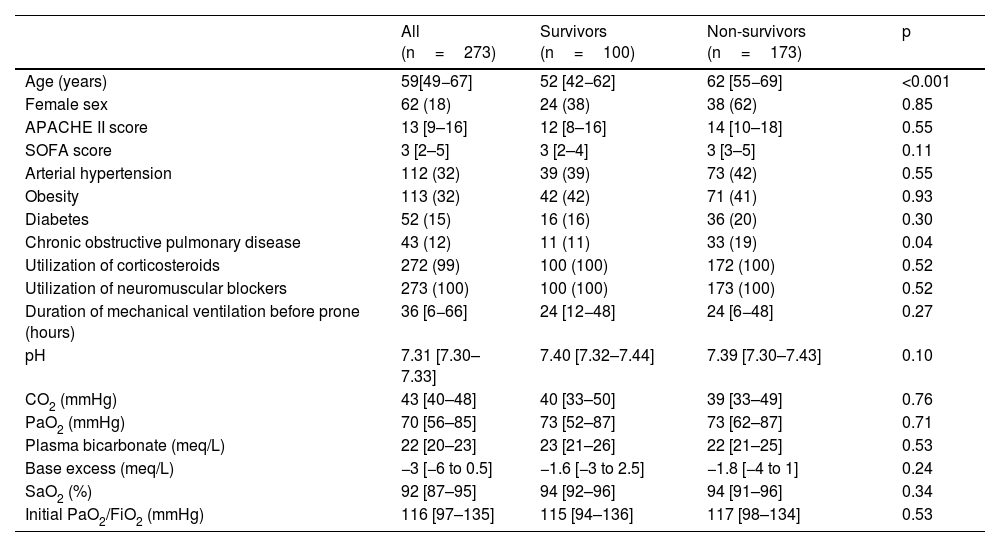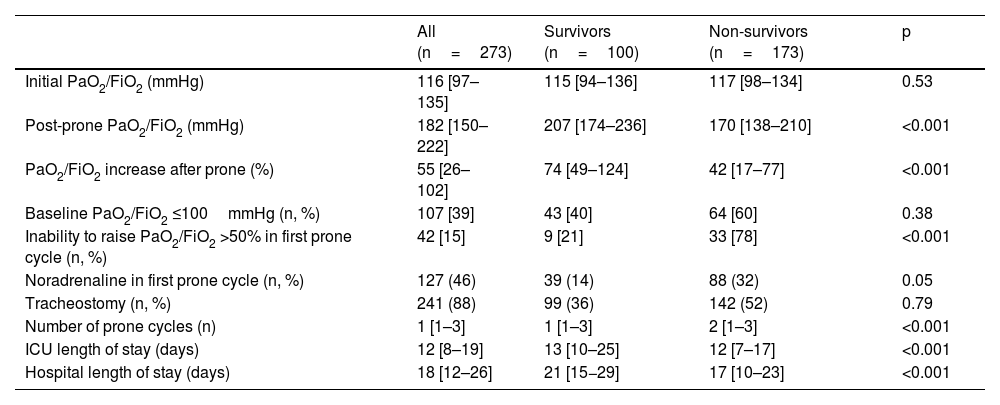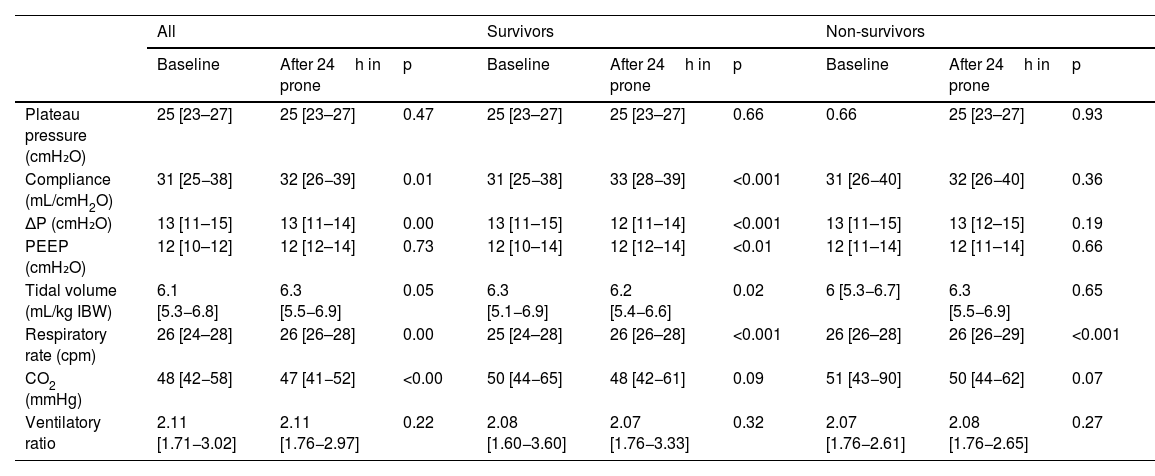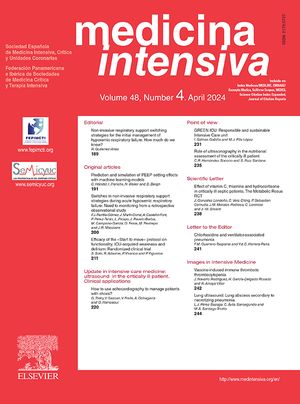To analyze characteristics, changes in oxygenation, and pulmonary mechanics, in mechanically ventilated patients with ARDS due to SARS-CoV-2 treated with prone position and evaluate the response to this maneuver.
DesignCohort study including patients with PaO2/FiO2 <150mmHg requiring prone position over 18 months. We classified patients according to PaO2/FiO2 changes from basal to 24h after the first prone cycle as: 1) no increase 2) increase <25%, 3) 25%–50% increase 4) increase >50%.
Setting33-bed medical-surgical Intensive Care Unit (ICU) in Argentina.
Patients273 patients.
InterventionsNone.
Main variables of interestEpidemiological characteristics, respiratory mechanics and oxygenation were compared between survivors and non-survivors. Independent factors associated with in-hospital mortality were identified.
ResultsBaseline PaO2/FiO2 was 116 [97–135]mmHg (115 [94–136] in survivors vs. 117 [98–134] in non-survivors; p=0.50). After prone positioning, 22 patients (8%) had similar PaO2/FiO2 values; 46(16%) increased PaO2/FiO2 ≤25%; 55 (21%) increased it 25%–50%; and 150 (55%), >50%. Mortality was 86%, 87%, 72% and 50% respectively (p<0.001). Baseline PaO2/FiO2, <100mmHg did not imply that patients were refractory to prone position. Factors independently associated with mortality were age, percentage increase in PaO2/FiO2 after 24h being in prone, and number of prone cycles.
ConclusionsOlder patients unable to improve PaO2/FiO2 after 24h in prone position and who require >1 cycle might early receive additional treatments for refractory hypoxemia. After the first 24h in the prone position, a low percentage of PaO2/FiO2 increase over baseline, beyond the initial value, was independently associated with higher mortality.
Analizar las características, cambios en la oxigenación y mecánica pulmonar, en pacientes ventilados mecánicamente con SDRA por SARS-CoV-2 tratados con posición prona, y evaluar la respuesta a esta maniobra.
DiseñoEstudio de cohorte que incluyó pacientes con PaO2/FiO2 <150mmHg que requirieron posición prona durante 18 meses. Se clasificaron los pacientes según los cambios de PaO2/FiO2 desde el basal y 24horas después del primer ciclo prono como: 1) Sin aumento 2) Aumento <25%, 3) 25–50% de aumento 4) Aumento >50%.
AmbitoUnidad de Cuidados Intensivos (UCI) médico-quirúrgica de 33 camas en Argentina.
Pacientes273 pacientes.
IntervencionesNinguna.
Principales variables de interésSe compararon características epidemiológicas, mecánica respiratoria y oxigenación entre sobrevivientes y no sobrevivientes. Se identificaron factores independientes asociados a la mortalidad hospitalaria.
ResultadosLa PaO2/FiO2 basal fue de 116 [97–135]mmHg (115 [94–136] en sobrevivientes vs. 117 [98–134] en no sobrevivientes; p=0,50). Después de la posición prona, 22 pacientes (8%) tenían valores similares de PaO2/FiO2; 46 (16%) aumentaron PaO2/FiO2 ≤25%; 55 (21%) lo aumentaron 25%–50%; y 150 (55%), >50%. La mortalidad fue de 86%, 87%, 72% y 50% respectivamente (p<0,001). La PaO2/FiO2 basal, <100mmHg no implicó que los pacientes fueran refractarios a la posición prona. Los factores asociados independientemente con la mortalidad fueron la edad, el aumento porcentual de PaO2/FiO2 después de 24horas en prona, y el número de ciclos prono.
ConclusionesLos pacientes mayores que no pueden mejorar PaO2/FiO2 después de 24 horas en posición prona y que requieren más de 1 ciclo podrían recibir tratamientos adicionales para la hipoxemia refractaria. Después de las primeras 24horas en decúbito prono, un bajo porcentaje de aumento de PaO2/FiO2 sobre el valor basal, más allá del valor inicial, se asoció de forma independiente con una mayor mortalidad.
Article
Go to the members area of the website of the SEMICYUC (www.semicyuc.org )and click the link to the magazine.











